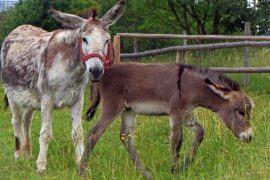Do donkeys laugh? Interesting question, isn’t it? The hee-haw sound or “bray” that resembles a laugh is how donkeys react to most of the things happening around them. Interestingly, the facial expression of donkeys while hee-hawing or braying also resembles a laugh, making us believe that they are laughing. In reality, donkeys do not laugh, but their expressions and the sound resemble what humans consider a “laugh”.
Why do donkeys laugh (if we decide to call it that way)
Donkeys laugh or bray or hee-haw for a variety of reasons. Most of the time, it is used to indicate pain, happiness, or even to warn someone. Donkeys, being highly territorial animals, might make it look like they are laughing while they are actually trying to warn a potential predator or other animals that are in close vicinity.
Besides the hee-haw sound, a donkey’s face might look like it is actually laughing because of its facial expressions and showing of teeth. This behavioral response seen in certain animals is called Flehmen’s response and it has no actual relation to a laugh.
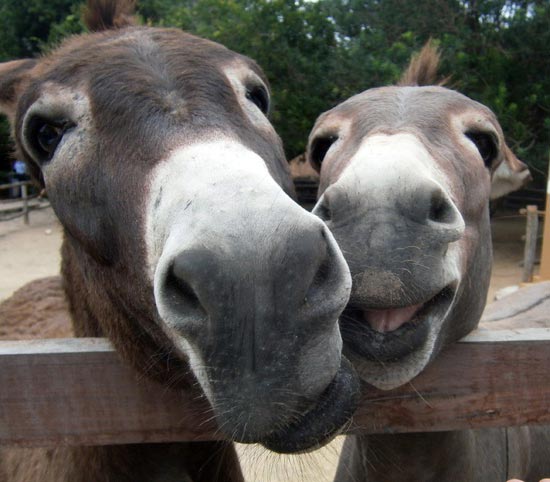
The hee-haw sound
While the hee-haw or bray can sound like a laugh, the donkey producing the sound is certainly not laughing. The hee sound is produced when the donkey inhales and vocalizes and the haw sound comes out when the donkey exhales along with vocalization.
Flehmen’s response
Another visual component of the donkeys’ laugh is certainly the facial expression called Flehmen’s response. Flehmen’s response or Flehmening is exhibited when a donkey curls back its upper lip exposing its front teeth and inhales with the nostrils closed. A donkey may exhibit this behavior for several seconds and can be seen stretching its neck or holding the head high in the air during the behavior.
Flehmen’s response also allows the transfer of pheromones and scents into the vomeronasal organ located above the roof of the mouth via a duct that exits behind the front teeth of the donkey.
Reasons behind a donkey’s “laugh”
While we know it is exactly not a “laugh”, donkeys exhibit this behavior in various situations. As a donkey enthusiast, it is critical to know when and why donkeys react by “laughing”.
Warning of danger
Donkeys commonly exhibit the laughing-like behavior when they sense a threat. Donkeys being prey animals in the wild, they are exceptionally careful when it comes to defending themselves. Also, on many farms, donkeys are used as guard animals to protect other livestock from predators such as coyotes.
Donkeys usually bray continuously (like a “laugh”) to scare the predators away and alert the owners of a potential threat to the farm. In certain cases, donkeys don’t really mind attacking and killing smaller predators like coyotes along with braying.
When they need to convey something
Pet donkeys usually bray or make the laugh-like sound when they are in need of something. They could be either hungry or the flies could be causing them distress. It could also be that the donkey is in pain due to an injury. Pet donkeys will also be happy to see their owners and might bray to get some treats. As a donkey owner, it is advised to pay attention to your donkey’s brays and check the reason behind it.
Being territorial
Donkeys are highly territorial, especially jacks. A donkey might not allow another donkey or even other farm animals to come into its territory. They might start braying and show the laugh-like behavior if another animal tries to occupy their territory. This could even go to other modes of defense like kicking or biting.
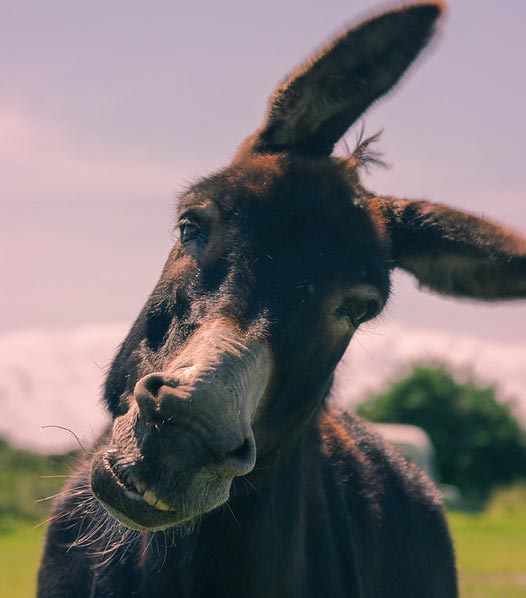
How to deal with a donkey if they seem to be “laughing”?
As mentioned above, donkeys hee-haw for various reasons. Knowing the reason behind your donkey’s “laugh” or hee-haw is important as a donkey owner.
If your donkey has been braying continuously or showing the “laugh-like” behavior, try to understand if there’s something wrong. Observe the donkey from a distance if they seem to be in distress or they are aggressive.
Sometimes, the donkey could be trying to warn of a predator like a coyote. In such cases, a donkey owner should take immediate steps to chase the predator away from the farm.
Donkeys are sturdy animals who do not easily reveal pain or distress. But they could be braying continuously if they are in serious pain due to an injury. If your donkey seems to be in some kind of distress that you cannot clearly identify, it is advised to get the help of a veterinarian immediately.
On the positive side, sometimes your donkey could be braying because he/she wants some treats and a hug from the owner. Donkeys are lovely creatures who like to mingle with other animals and their humans. Spare some quality time to spend with your donkeys every day, so that they do not feel lonely and will be happy living on your farm.
Final Thoughts
Donkeys do not really laugh, the behavior resembles what humans understand as a laugh due to the sound it produces and the facial expression called Flehmen’s response. If we still decide to call it a “laugh”, donkeys do it for many reasons such as warning of a predator, being territorial, when they are hungry, being in distress, or even when they need a hug from the owner. Always try to understand why your donkey is “laughing” or hee-hawing and see what you can do about it.
Frequently Asked Questions
1. Do donkeys laugh like humans do?
- Answer: No, donkeys do not laugh in the way humans do. The sound that resembles laughter is called a “bray” or “hee-haw.” While it may sound like laughter and their facial expressions during braying can look similar to a laugh, donkeys are not actually laughing. Their braying is a form of communication used to express various needs or emotions.
2. Why do donkeys make sounds that seem like they’re laughing?
- Answer: Donkeys bray for several reasons including to indicate pain, happiness, or to warn of danger. Their facial expressions while braying can resemble a laugh because of a behavior called Flehmen’s response, where they curl back their upper lip and expose their teeth. This response is not related to laughter but is used for detecting scents and pheromones.
3. What is Flehmen’s response in donkeys?
- Answer: Flehmen’s response is a behavioral reaction seen in many animals, including donkeys. It involves curling back the upper lip, exposing the teeth, and inhaling with the nostrils closed. This behavior helps donkeys detect pheromones and scents by transferring them to the vomeronasal organ. It can make their facial expression look like they are laughing, but it is a physiological response rather than an emotional one.
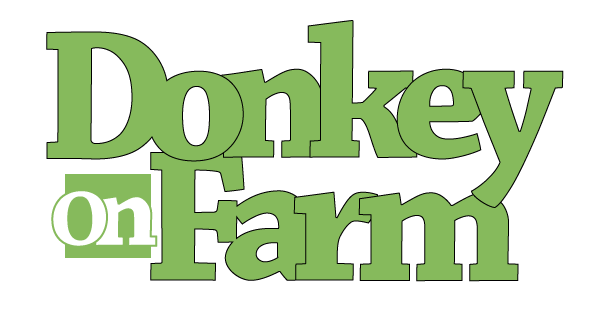
![Do Donkeys Laugh? [Plus Why Do They Do It?] do-donkeys-laugh](https://donkeyonfarm.com/wp-content/uploads/2022/08/Why-do-donkeys-laugh.jpg)

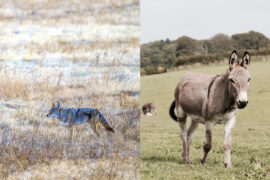
![Do Donkeys Make Good Pets? [Plus What to Know Before You Get One] Do-Donkeys-Make-Good-Pets](https://donkeyonfarm.com/wp-content/uploads/2022/05/Do-Donkeys-Make-Good-Pets-270x180.jpg)
![Are Donkeys Dangerous to Dogs? [Plus How to Keep Your Dog Safe] Are-Donkeys-Dangerous-to-Dogs](https://donkeyonfarm.com/wp-content/uploads/2022/07/Are-Donkeys-Dangerous-to-Dogs-270x180.jpg)
